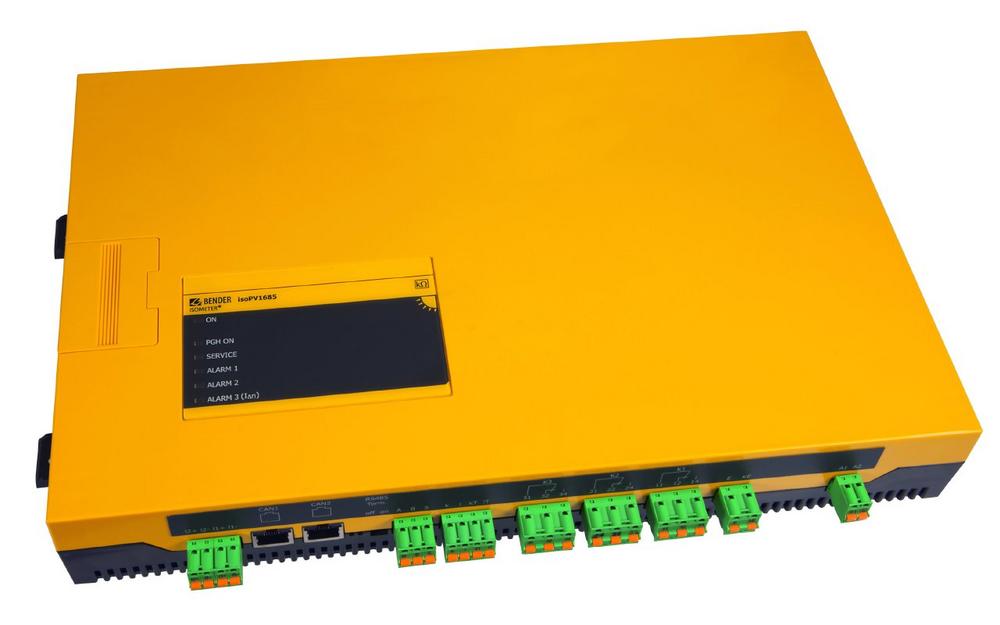At a supply voltage of DC 18…30 V the devices have a low power consumption of ≤ 7.5 VA.
By using the latest measuring technology it is possible, despite very high-impedance coupling (Ri ≥ 70 k) and low coupled measuring current (Im ≤ 1.5 mA), to realise an extremely wide range for the insulation fault response value (Ran = 200 Ω … 1 MΩ).
The insulation fault location feature included in the isoPV1685P is a device feature that will pay for itself very quickly in large-scale PV systems. In the event of an insulation fault being reported by the insulation monitoring, the internal locating current injector is activated automatically or manually on the PV system without any changes; both the faulty string and the faulty module can then be located very quickly in the large-scale PV system with the aid of an already installed and/or portable insulation fault locator (e.g. EDS460-D or EDS195P), without the need to take parts of the installation out of operation to locate the fault. By using the integrated insulation fault location function in the isoPV1685P variant, costs for insulation fault location by electricians and the related downtimes can be saved.
Along with the three alarm relays, the device features the Bender-specific BMS bus as a digital interface and also a CAN bus.
A further innovative feature of the isoPV1685P variant is the data logger function for proactive installation maintenance and a history memory for alarms on an integrated SD card, without the need for a digital network. By straightforwardly evaluating the text-based files, the data logger function can be used to optimise the uptime of the large-scale PV system monitored and to minimise maintenance costs by means of long-term planning. The history memory is saved in the common .csv format. An Excel tool is available for easy evaluation. With a 2-GByte µSD card, all relevant measurement, alarm and status data of the device and the PV system can be recorded over more than a year.
Thanks to the complete long-term monitoring with a combined regular graphical evaluation of the insulation resistance value over time, the system operator increases the probability that even hazardous design defects of the large-scale PV system can be detected. For example, if an inappropriate combination of PV connectors is used, it is likely that the poor fit will result in the ingress of dirt and moisture into the connection. In turn, it is highly probable that it will be possible to detect this pollution due to gradual reduction of the insulation resistance in the graphical trend evaluation, even with values above the required response values. As described in the article "Warum kompatible PV-Steckverbinder gefährlich sind" (Why compatible PV connectors are dangerous) (ELEKTRONIKPRAXIS no. 16 from 26.8.2013), it is exactly these design errors that can result in fires in PV systems.
By using the data logger function on the isoPV1685P, it is highly probable that system states involving "fire risk" on PV installations can be detected at an early stage. Preventive maintenance helps avoiding fire.
Bender GmbH & Co. KG
Londorfer Str. 65
35305 Grünberg
Telefon: +49 (6401) 807-0
Telefax: +49 (6401) 807-259
http://www.bender.de
Kommunikation
Telefon: +49 (6401) 807-521
E-Mail: marita.schwarz@bender.de
![]()
